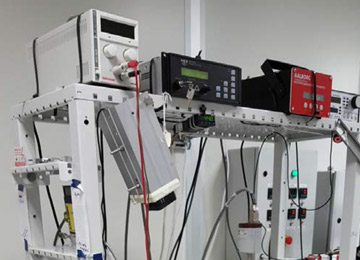ABSTRACT
Initiated Chemical Vapor Deposition (iCVD) is a deposition system that uses monomer vapor instead of any other technique that enables conformal coating and eliminates any disadvantage from other deposition techniques. Due to these advantages iCVD coatings can be used for biomedical applications. Coating AAO templates with P(MAA coEGDMA) creates pH responsive nanotubes. Depending on the pH of the environment these coated polymers swell or shrink. Swelling enables loading of the targeted molecules to nanotubes. Shrinking results in stress induced release of the loaded molecules. This conclusion can be used for making drugs reach their targeted area more effectively.
Keywords: iCVD, pH Responsive Coating, Polymeric Nanotubes, Controlled Release
OBJECTIVES
- Learn to use the iCVD system. Read articles, research on internet and practice on lab to improve knowledge and practice.
- Produce a conformal coated substrate with any monomer.
- Produce a conformal coated nanotube with P(MAA co-EDGMA) monomer.
- Load the nanotubes with any molecule of choice.
- Unload the nanotubes with response to pH stimuli
PROJECT DETAILS
iCVD is a technique that enables the fabrication of chemically well-defined thin polymeric films on complex objects with micro and nano-scale features. This technique is different from other techniques as it uses an initiator to start polymerization process. Alongside the initiator, monomer and nitrogen are also introduced. Monomers are separately heated so that they can vaporize. Once their vapors propagate from their jars to the chamber the initiator thermally decomposes, thanks to pre-heated filaments, to form radicals but monomer vapor is not affected. Monomers and free radicals adsorb on the substrate and thus initiate free-radical polymerization. The low energy cost of iCVD holds advantages over other CVD methods, as the process can be conducted at a low temperature.

.jpg)